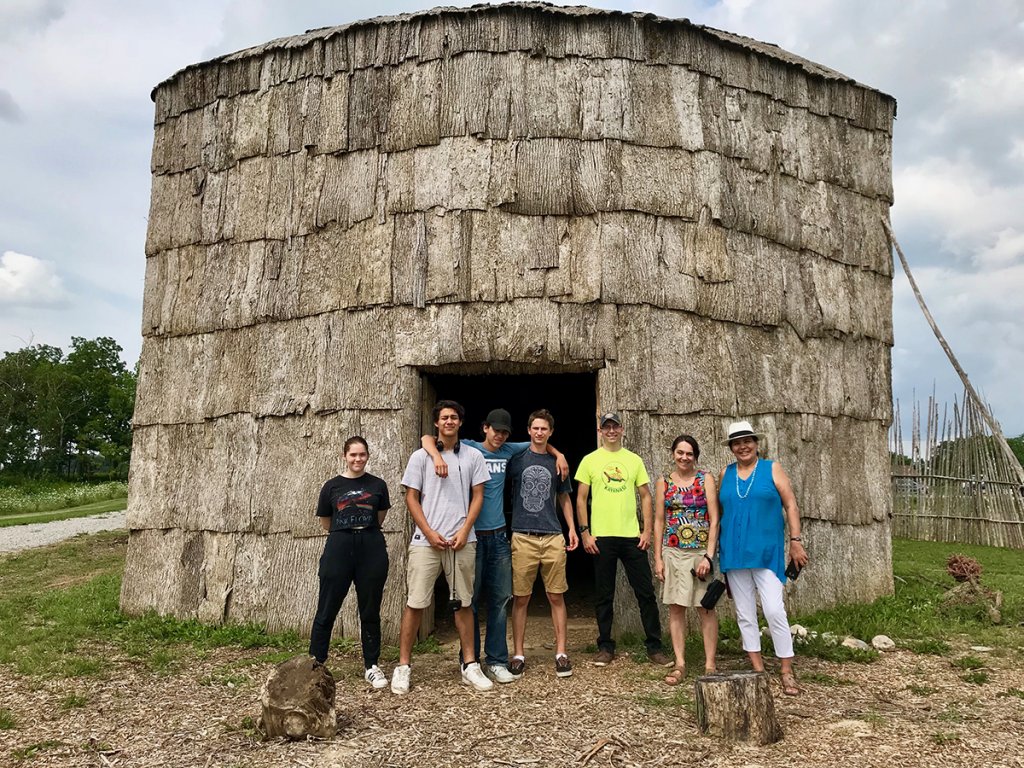Including the Voice of Indigenous Youth in Green Infrastructure
Kayanase_nursery_six_nations-web/ UofT / See Updates_ final report links_
EN_ Green infrastructure, which works with natural processes to provide invaluable ecosystem services, is advocated by conservation authorities and communities. A significant gap remains in our understanding of how to collaborate effectively across disciplines and in particular to co-produce solutions with First Nations, Inuit and Métis peoples
This project is being co-developed by the Toronto and Region Conservation Authority (TRCA), the Native Canadian Centre of Toronto (NCCT), and the University of Toronto (UofT), with support from Ryerson Urban Water to explore a participatory model that includes the voice of Indigenous youth.
The project is motivated by three aspirations: 1) to define the role of Landscape Architecture in responding to the Truth and Reconciliation Commission of Canada’s Calls to Action, 2) to develop a ‘learning-by-doing’ example for integrating Indigenous Ways of Knowing including themes of Respect, Relationship, Reciprocity, Responsibility, and 3) to help bridge the intergenerational gap on traditional knowledge.
The intent is to learn and share the experience of how Indigenous high-school students and NCCT mentors invited to participate in landbased graduate courses, at the UofT and Ryerson University, can bring the voice of Indigenous youth to green infrastructure and Indigenous place-making.
Collaboration avec la jeunesse autochtone dans les infrasturctures vertes
Bolton Camp _ Students buelding model _ see Updates_ Final Report Links
FR_ L’infrastructure verte, qui a recours à des processus naturels pour assurer des services écosystémiques inestimables, est défendue par les autorités de protection de la nature et les communautés. Toutefois, nous ne savons pas comment collaborer efficacement entre les diverses disciplines et, en particulier, comment trouver des solutions avec les peuples des Premières nations, les Inuits et les Métis.
Ce projet est développé conjointement par l’Office de protection de la nature de Toronto et de la région (TRCA), le Native Canadian Centre of Toronto (NCCT) et l’Université de Toronto (U of T), avec le soutien de Ryerson Urban Water pour étudier un modèle participatif incluant la collaboration avec les jeunes autochtones.
Le projet se décline en trois éléments : 1) définir le rôle de l’architecture de paysage dans le cadre des appels à l’action de la Commission de vérité et réconciliation du Canada 2) présenter un exemple d’apprentissage par la pratique en intégrant les façons de faire autochtones, y compris les thèmes du respect, de la relation, de la réciprocité et de la responsabilité 3) combler le fossé intergénérationnel qui existe dans le savoir traditionnel.
L’objectif est d’apprendre et de faire connaître la façon dont les étudiants autochtones et les mentors du NCCT invités à participer à des cours d’études supérieures à l’U of T et à l’Université Ryerson peuvent faire entendre la voix des jeunes Autochtones dans la conception d’infrastructures vertes et l’aménagement de lieux publics pour les Autochtones.
UPDATES / MISES A JOUR
2018.12 Update: The recipients co-lead an Indigenous youth program named ‘Nikibii Dawadinna Giigwag’ / Anishinaabemowin - Manitoulin dialect: “Healing of a Flooded Valley”, with Elder Whabagoon, the Daniels School at University of Toronto, and TRCA's Bolton Camp Project. Anticipated completion is March 2019.
2019.01 Update
Final Report: Including the Voice of Indigenous Youth in Green infrastructure


